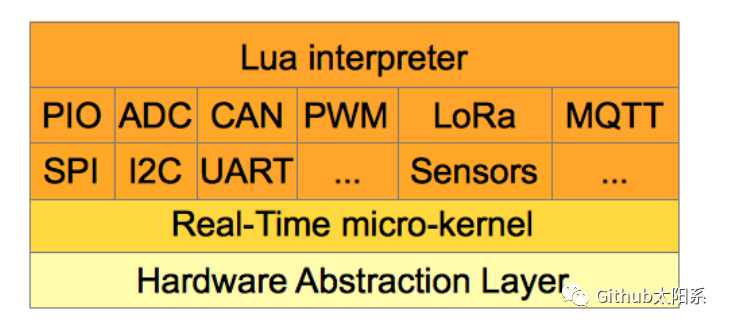Introduction
In the field of embedded systems, efficiency and resource optimization are crucial. Lua RTOS, as an outstanding real-time operating system, stands out due to its minimal requirements for FLASH and RAM memory. This article will detail the characteristics and functions of Lua RTOS, focusing on its compatibility with popular platforms such as ESP32, ESP8266, and PIC32MZ.
What is Lua RTOS?
Lua RTOS is an open-source real-time operating system that combines the powerful features of the Lua programming language with the efficiency of a real-time operating system. It provides a lightweight and flexible environment for embedded application development, making it an ideal choice for resource-constrained devices.

Features of Lua RTOS
-
• Minimal Resource Requirements: One of the key advantages of Lua RTOS is its minimal requirements for FLASH and RAM memory. This allows it to run efficiently on resource-limited embedded systems.
-
• Real-Time Capabilities: Lua RTOS is designed to effectively handle real-time tasks. It provides mechanisms for task scheduling, synchronization, and inter-task communication, ensuring that critical tasks can be executed in a timely manner.
-
• Lua Programming Language: Lua RTOS employs the Lua programming language, known for its simplicity and ease of use. Lua offers rich features, including dynamic typing, garbage collection, and coroutines, making it a powerful tool for embedded application development.
-
• Modularity and Scalability: Lua RTOS adopts a modular approach, allowing developers to add or remove components based on their needs. It provides various modules, including file systems, networking, and hardware abstraction, enabling developers to build customized solutions.
-
• Platform Compatibility: Lua RTOS currently supports popular platforms such as ESP32, ESP8266, and PIC32MZ. Additionally, it can be easily ported to other 32-bit platforms, making it a versatile choice for a wide range of embedded systems.
Compatibility with ESP32
Lua RTOS fully supports the widely used microcontroller ESP32. With Lua RTOS, developers can leverage the ESP32 and its rich peripherals to build powerful and efficient embedded applications. Lua RTOS provides APIs to access various ESP32 features, including GPIO, UART, SPI, I2C, and WiFi, simplifying the development process.
Compatibility with ESP8266
Similar to the ESP32, Lua RTOS integrates seamlessly with the ESP8266. By using Lua RTOS, developers can take advantage of the ESP8266 and its built-in WiFi module to create IoT applications, sensor networks, and more. Lua RTOS provides APIs for WiFi connectivity, facilitating integration with cloud services and remote communication.
Compatibility with PIC32MZ
Lua RTOS also extends compatibility with Microchip’s high-performance microcontroller PIC32MZ. With Lua RTOS, developers can fully utilize the advanced features of the PIC32MZ, such as a powerful CPU, rich peripheral set, and ample memory. Lua RTOS provides APIs for accessing PIC32MZ functionalities, making it possible to develop complex embedded applications.
Conclusion
Lua RTOS is a powerful embedded real-time operating system with minimal resource requirements and real-time capabilities. With compatibility with popular platforms such as ESP32, ESP8266, and PIC32MZ, Lua RTOS provides developers with a flexible and efficient environment for building embedded applications. Whether for IoT, sensor networks, or other embedded projects, Lua RTOS is a reliable choice for developers seeking simplicity, modularity, and high performance.
Project Address: https://github.com/whitecatboard/Lua-RTOS-ESP32
